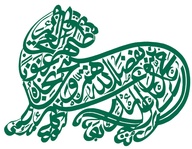 Why is leaning Arabic difficult? Because Arabic has its own special characters, pronunciation, and writing. Arabic is also a language with long history—modern Arabic is the derivative of classical Arabic, which was used in around 6th century AD.
Why is leaning Arabic difficult? Because Arabic has its own special characters, pronunciation, and writing. Arabic is also a language with long history—modern Arabic is the derivative of classical Arabic, which was used in around 6th century AD.
In this blog post we interviewed one of our Arabic colleagues, Laith Ibrahim.
Monterey Language Services (referred to as “M”): Thank you for participating in this interview. Can you briefly introduce Arabic to us?
Laith (referred to as “L”): Arabic is one of the Middle Eastern languages, which also include Dari, Urdu, Farsi, Pashto and Kurdish. These languages all use Arabic letters but depending on the language, each one may have additional letters or extra sounds. I am originally from Iraq. Before settling in the U.S. I have worked in Jordan and the United Arab Emirates, where I used a mix of standard Arabic and the local and Iraqi dialect.
M: I’ve heard that in Arabic the term “lion” can have hundreds of names. That sounds very interesting? How is it possible?
L: There are in fact at least 500 names for the word “lion.” The word “sword” is another example. It has around 300 different names that are given based on the characteristics of the sword like shape, size, thickness, weight, etc.
M: Can you share more differences between Arabic and English?
L: There are many differences, for instance:
• Arabic is written from right to left and in cursive format, with no distinctions between upper and lower case. Arabic has 28 letters and each has up to 4 shapes depending on its location: the beginning, middle, or end of the word. The shape of a letter is also affected by the predecessor and successor.
• Arabic has no vowel letters. Instead, it uses small characters that are written above or below the letter to change the sound of the letter. These are called diacritics (in Arabic, “Harakat”) indicate sounds not represented by the basic alphabet. Arabic text is usually written without them unless a word can be read in a different way if they are not used.
• Arabic has letters that produce sounds that don’t exist in English. Also, the sound for P, CH, V, X don’t exist in Arabic.
• Most words have one form and are written in one way. For example, my name “ليث” has only one way of writing it in Arabic. In English it can be written as “Laith” or “Layth.”
M: Thank you for sharing! One last question, what does your name “Laith” mean in Arabic?
L: (Laughs) “Laith” is actually “lion” in Arabic. It’s a bold, strong lion.



 (9 votes, average: 3.33 out of 5)
(9 votes, average: 3.33 out of 5)

Leave Your Comments Below